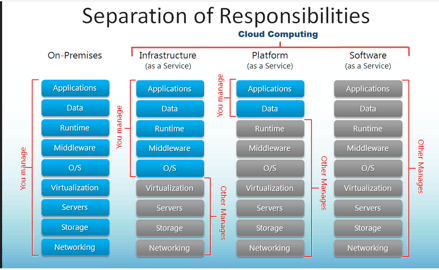Is going Server-Less Right for Your Business?
/ in blog, managed IT services, remote workforce support / by Sam Shargo“Cloud is about how you do computing, not where you do computing.”–Paul Maritz, CEO of VMware
Did you know? Cloud data centers will process 94% of workloads in 2021. Virtually every business will have moved their business to the cloud, making traditional data centers a thing of the past.
With Microsoft Azure, AWS, and Google Cloud driving the strength of cloud computing, you may wonder if cloud computing is right for your business. Here are some basics to get you up to speed.
- Cloud Beginners Migrate with Azure - Of the Big 3–AWS, Azure, and Google–Azure and AWS are the vendors of choice for almost all beginners migrating to the cloud.
- Choose the Cloud for Your Business–public, private, and hybrid. While they each offer different benefits to different businesses, the ultimate difference is who owns what. Most Small to Medium businesses prefer to use the public cloud while larger businesses lean toward private solutions. With the cost benefits and savings, the public cloud is growing three times faster than private solution cloud usage.
- Opex vs Capex
Capital expenditures (CAPEX) are major purchases that are designed to be use over a period of time. Operating expenses (OPEX) are necessary operational expenses that businesses pay periodically. Therefore, Cloud costs are treated as operational expense instead of a capital expense that depreciates over time. Think buying a truck versus leasing a truck just for the time period that you need.
The shift in technology and budgeting made cloud affordable and allowed small businesses to benefit from a cloud services - previously only large enterprises could afford such luxury. - Choosing the right Cloud Service for Your Business– There are four different types of Cloud services: Software as a Service (SaaS), Platform as a Service (PaaS), and Infrastructure as a Service (IaaS), each have their own advantages depending on how much of turn-key solution you are looking for.
The key to remember when deciding which Cloud service is the best fit for your business is how much of granular control and management you require and how much you prefer to offload to the cloud provider.
Cloud adoption gives you access from anywhere in the world. Though cost is an incentive to move to the cloud, it’s not the first or only reason. Access to data when and where it’s needed is one reason, as is flexibility, relieving IT staff, and lowering risks.
Shared Responsibility Model

Server-less = Pain Less
While the majority of organizations who have moved to the cloud, there is still reliance on having their own virtual servers and networks hosted in the cloud using Infrastructure as a Service (IaaS). This means businesses must have staff in place who are experts in cloud systems and can lead to additional costs and headaches from the IT department to the C-suite.
Wondering what problems can occur when having servers hosted in the cloud? Below are a few things to consider.
- YOU need to patch them regularly to protect against threats and ensure compatibility
- YOU trust the network in the sense that typically anything that is on the same network as the server, can connect or access that server.
- YOU need to protect them against hackers.
- YOU need to upgrade them every several years as operating systems get outdated.
- YOU need to ensure they are highly available and reduce the chances that your critical systems and data will become inaccessible.
The take away is that virtual servers still require maintenance and management.
Since the cloud provider manages the actual infrastructure and software, companies get benefit from always having the latest and most modern versions without the painful costs and logistics of doing their own upgrades.
Some examples include:
- Using Azure AD instead of using traditional active directory servers.
- Using SharePoint Online instead of using File Servers that need to be patched and secured.
Modern web-based solutions offer a host of benefits delivered as an SaaS solution for every organization, such as
- The Cloud provider is responsible for patching
- The cloud provider is responsible for upgrading the underlying systems
- The cloud provider is responsible for protecting the systems from outside threats
- The cloud provider is responsible for ensuring your data and systems are always available and they provide a financial guarantee.
- You only need to focus on using the cloud system as it is designed and provide the necessary training and support to your staff.
Using SaaS services like Microsoft 365, QuickBooks Online, Sales Force, Dynamics or PowerBI means less risk, less responsibility and less headaches when it comes to security, compliance, and reliability.
What’s stopping you from making the move?
One of the biggest stumbling blocks toward Cloud adoption for small businesses is lack of Cloud expertise and limited budgets. Hiring a Cloud architect that can design and pro-actively support cloud environments is cost prohibitive and out of reach for most small to medium size businesses.
Meanwhile, the future of work is powered by Cloud - that enables companies to scale, harden their security, and allow their employees to work from anywhere using an affordable model of modern IT. Cloud means never having to deal with upgrades, paying for network projects or buying equipment that depreciates overnight.
Still wondering how you can reduce your footprint and headaches by going server-less?
Call us for a free 20-minute consultation or email us. We’re happy to answer any questions you may have.






